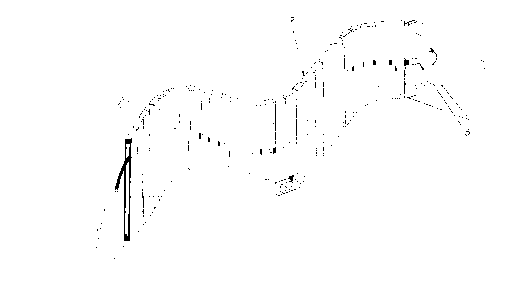Some of the information on this Web page has been provided by external sources. The Government of Canada is not responsible for the accuracy, reliability or currency of the information supplied by external sources. Users wishing to rely upon this information should consult directly with the source of the information. Content provided by external sources is not subject to official languages, privacy and accessibility requirements.
Any discrepancies in the text and image of the Claims and Abstract are due to differing posting times. Text of the Claims and Abstract are posted:
| (12) Patent Application: | (11) CA 2245286 |
|---|---|
| (54) English Title: | WAVE PROPULSION DEVICE |
| (54) French Title: | PROPULSEUR A VAGUES |
| Status: | Deemed Abandoned and Beyond the Period of Reinstatement - Pending Response to Notice of Disregarded Communication |
| (51) International Patent Classification (IPC): |
|
|---|---|
| (72) Inventors : |
|
| (73) Owners : |
|
| (71) Applicants : |
|
| (74) Agent: | |
| (74) Associate agent: | |
| (45) Issued: | |
| (22) Filed Date: | 1998-09-04 |
| (41) Open to Public Inspection: | 2000-03-04 |
| Availability of licence: | N/A |
| Dedicated to the Public: | N/A |
| (25) Language of filing: | English |
| Patent Cooperation Treaty (PCT): | No |
|---|
| (30) Application Priority Data: | None |
|---|
An externally powered propulsion device particularity designed
to propel floating and submerged water craft, as well as
any other vehicles (land or air). The device utilizes a
helical coil drive mechanism which causes a flexible body
plate(s) to move and undulate in such a way that a travelling
unilineal wave motion is produced. The resulting wave creates
thrust within any fluidic medium. (See attached description for
more detailed information.)
In brief, the device is designed to transform mechanical
standing wave motion into a travelling wave pattern applicable
as a propulsion mechanism.
The device is also broadly applicable in many situations
where a travelling wave pattern may be desirable for reasons
not related to vehicular propulsion (e.g., pumps, fans, fishing
lures, massaging devices, conveyers, amusement devices, etc.).
Note: Claims are shown in the official language in which they were submitted.
Note: Descriptions are shown in the official language in which they were submitted.

2024-08-01:As part of the Next Generation Patents (NGP) transition, the Canadian Patents Database (CPD) now contains a more detailed Event History, which replicates the Event Log of our new back-office solution.
Please note that "Inactive:" events refers to events no longer in use in our new back-office solution.
For a clearer understanding of the status of the application/patent presented on this page, the site Disclaimer , as well as the definitions for Patent , Event History , Maintenance Fee and Payment History should be consulted.
| Description | Date |
|---|---|
| Inactive: IPC from MCD | 2006-03-12 |
| Inactive: IPC from MCD | 2006-03-12 |
| Inactive: IPC from MCD | 2006-03-12 |
| Application Not Reinstated by Deadline | 2004-09-07 |
| Inactive: Dead - RFE never made | 2004-09-07 |
| Deemed Abandoned - Failure to Respond to Maintenance Fee Notice | 2004-09-07 |
| Letter Sent | 2003-09-15 |
| Inactive: Abandon-RFE+Late fee unpaid-Correspondence sent | 2003-09-04 |
| Reinstatement Requirements Deemed Compliant for All Abandonment Reasons | 2003-08-29 |
| Inactive: Adhoc Request Documented | 2003-06-06 |
| Deemed Abandoned - Failure to Respond to Maintenance Fee Notice | 2002-09-04 |
| Application Published (Open to Public Inspection) | 2000-03-04 |
| Inactive: Cover page published | 2000-03-03 |
| Inactive: Correspondence - Formalities | 1999-12-02 |
| Classification Modified | 1998-12-02 |
| Inactive: First IPC assigned | 1998-12-02 |
| Inactive: IPC assigned | 1998-12-02 |
| Inactive: IPC assigned | 1998-12-02 |
| Inactive: IPC assigned | 1998-12-02 |
| Inactive: IPC assigned | 1998-12-02 |
| Inactive: First IPC assigned | 1998-12-02 |
| Inactive: IPC assigned | 1998-12-02 |
| Inactive: Filing certificate - No RFE (English) | 1998-10-09 |
| Application Received - Regular National | 1998-10-07 |
| Abandonment Date | Reason | Reinstatement Date |
|---|---|---|
| 2004-09-07 | ||
| 2002-09-04 |
The last payment was received on 2003-08-29
Note : If the full payment has not been received on or before the date indicated, a further fee may be required which may be one of the following
Patent fees are adjusted on the 1st of January every year. The amounts above are the current amounts if received by December 31 of the current year.
Please refer to the CIPO
Patent Fees
web page to see all current fee amounts.
| Fee Type | Anniversary Year | Due Date | Paid Date |
|---|---|---|---|
| Application fee - small | 1998-09-04 | ||
| MF (application, 2nd anniv.) - small | 02 | 2000-09-05 | 2000-09-01 |
| MF (application, 3rd anniv.) - small | 03 | 2001-09-04 | 2001-08-31 |
| MF (application, 4th anniv.) - small | 04 | 2002-09-04 | 2003-08-29 |
| Reinstatement | 2003-08-29 | ||
| MF (application, 5th anniv.) - small | 05 | 2003-09-04 | 2003-08-29 |
Note: Records showing the ownership history in alphabetical order.
| Current Owners on Record |
|---|
| ROBERT BRIAN MANCUSO |
| Past Owners on Record |
|---|
| None |